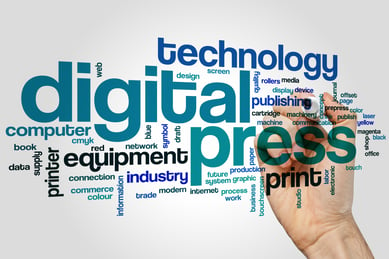The final installment of our three-part labor series focuses on employing automation as a competitive advantage.
In the first part of this series, we analyzed the aging, skilled labor market—the trend of older employees leaving the workforce and strategies for recruiting youthful as well as more mature workers. Next, we delved into how to hold on to staffers already on the payroll. In Part 3 of three, we analyze automation advancements as part of the solution to printing industry staffing shortages.
With the overall cost of doing business increasing and production volumes decreasing, how can print service providers (PSPs) maintain profit margins and still make money? The ability to print more jobs at faster rates becomes paramount. Automated technologies allow employees to perform critical pre-press, printing, and post-press operations without requiring years of experience as apprentices or junior assistants. For example, achieving precise colors on the press has become a case of science trumping subjectivity, according to Shawn Sundquist, president and CEO of Range Printing, Inc. (Brainerd, MN).
print service providers (PSPs) maintain profit margins and still make money? The ability to print more jobs at faster rates becomes paramount. Automated technologies allow employees to perform critical pre-press, printing, and post-press operations without requiring years of experience as apprentices or junior assistants. For example, achieving precise colors on the press has become a case of science trumping subjectivity, according to Shawn Sundquist, president and CEO of Range Printing, Inc. (Brainerd, MN).
“In some respects, the skilled-labor shortage has forced the issue,” says Sundquist, a third-generation leader at the company his grandfather founded 55 years ago. “There is definitely an older demographic in our pressroom running the presses,” he notes, lamenting that the vast majority of younger workers don’t seem to care much about the intricacies of mechanical inner-workings.
“Young people are used to pressing the ‘easy button,’” Sundquist observes.
Prepress, Pressrooms, and Binderies
Boss Litho is another firm doing more with less on its new RMGT 1060LX sheet fed press. Speedy makereadies and LED-UV curing are helping the California folding-carton printer to compete in the challenging economy. CEO Jean Paul Natal contends PSPs need to spend money to make money. Boss has recently invested more than $5 million in upgraded equipment.
Natal shares that, post-COVID, the cost of skilled labor has risen to affect the bottom line negatively. To retain employees in the Southern California marketplace, he and his team have been forced to raise hourly wages by almost 30%, “from $25 to $35 per hour.” However, advanced manufacturing automation is helping to offset this added expense as the firm’s overall head count is now down some 30%, or 20 employees.

Automation is a money-saver for binderies, too. For example, Blooming Color has added a highly automated Horizon SmartStacker to its Lombard, IL facility. Operating near-line, the device’s dynamic cut-and-stack capabilities eliminate manual sorting and help the commercial printing firm produce many thousands of shorter-run jobs each workday. To expedite orders, printed products come off the SmartStacker in separate piles. “There is no longer any hand-sorting involved,” CEO Brian Scott observes, ensuring faster job turnaround with less waste and fewer errors: The result is higher productivity, quality, and profitability. “It also saves two full bodies, which helps to pay for the machine,” adds Scott.
He sees the addition of the SmartStacker as a win-win for management and for hourly wage employees. “Having the ability to do more volume without hiring more people is where our business is going,” Scott points out. “Pre-COVID, we had five employees working in pre-press. Now, there are two; the three others moved to different departments.” So, Blooming Color is producing more products with the same staff while avoiding layoffs of permanent, skilled workers.
Not an Insurmountable Problem
Skilled labor issues will continue to challenge the printing industry, but companies can adopt strategies to mitigate the effects. A printer may choose to change recruiting practices, concentrate on employee retention, or invest in automation. Many times, they may pursue strategies in all three areas.
Doing nothing but complaining about the labor market and the cost of doing business is not an option for business sustainability. Printers should analyze their individual situation and take creative steps to ensure they have the people they need to service their customers now and in the immediate future.

